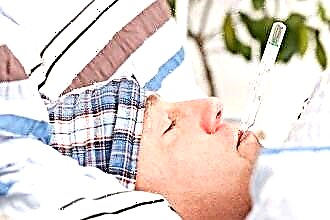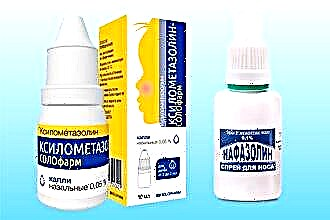Today, common pathologies among people of all ages are osteochondrosis and arterial hypertension. People from 20 to 60 years old and older are exposed to them. Previously, these diseases were diagnosed only in old people, but every year they are getting younger. Cervical osteochondrosis and blood pressure have a relationship. Blood pressure indicators directly depend on the presence and degree of osteochondrosis.

The relationship of pathologies
The symptoms of hypertension and cervical osteochondrosis are similar, therefore, self-medicating, people take the wrong drugs. This only aggravates the situation.
Osteochondrosis is degenerative changes of the dystrophic type, in which the spine is affected, this often provokes hypertension. The reason for this increase is the compression of the vertebral arteries. This is especially often manifested in people with hernias of the intervertebral type and protrusions.
It should be remembered that an increase in pressure in osteochondrosis is not hypertension. But it can develop additionally.
It is cervical osteochondrosis that provokes arterial hypertension, since branches branch off in the neck region, which feed most of the brain with blood. And this branch is localized in the place of the last segment of the cervical spine. These vessels supply blood to most structures of the brain and the medulla oblongata as well. It is he who regulates blood pressure indicators. When, due to the compression of the vertebral vessels in the medulla oblongata, an insufficient supply of blood occurs, oxygen starvation is observed.
Therefore, the processes that regulate blood pressure are turned on - the tone of the vascular walls increases. This condition exhibits quite a few symptoms that are very similar to hypertension. This pathology is called the vertebral artery syndrome. At the same time, the person still has a noise in his ears, there is a headache, dizziness, fainting. Symptoms of a hypertensive crisis appear, only they are not removed by the usual drugs for arterial hypertension.
The main causes of osteochondrosis with high blood pressure are:
- sedentary lifestyle;
- pathologies that provoke circulatory problems;
- impaired metabolism;
- obesity.
Blood pressure directly affects the functioning of human organs, and therefore, on his well-being. With osteochondrosis, the following changes can occur:
- Increased pressure. In this way, the body tries to restore the normal blood supply.
- Increased pressure of the intracranial type.
- Pressure surges. At the same time, it first rises, and then normalizes on its own.
- Decrease in pressure. This condition occurs when the body is unable to restore normal blood supply to the brain at increased pressure. Therefore, the process of reducing the oxygen demand of the cells is activated, and the pressure decreases.
With osteochondrosis, many people experience drops in blood pressure.
Doctors note that it is the races that often become the first harbingers of osteochondrosis. The pain syndrome already manifests itself in the case when the nerve root is infringed. In the process of developing osteochondrosis, other pathological conditions appear, for example, swelling of soft tissues and inflammation at the site of the lesion. And this further contributes to the narrowing of the vertebral artery.
Pressure surges in cervical osteochondrosis increase along with other symptoms after a long stay of the body in one position - sitting at a computer, reading.
 Quite often, an increase in symptoms is manifested when the body position changes from horizontal to vertical. For example, when a person gets out of bed. In addition to hypertension, an attack of nausea occurs, discomfort in the sternum, flies and circles appear in the eyes.
Quite often, an increase in symptoms is manifested when the body position changes from horizontal to vertical. For example, when a person gets out of bed. In addition to hypertension, an attack of nausea occurs, discomfort in the sternum, flies and circles appear in the eyes.
Blood pressure can jump after injury to the spine, bruises.This phenomenon often occurs in professional athletes and people after heavy physical exertion, with scoliosis. It does not matter what degree of pathology.
Treatment
Before starting treatment, instrumental diagnostics are prescribed, since even the most experienced doctor is not able to make a correct diagnosis without it. And osteochondrosis is important to identify as early as possible so that complications do not appear.
If the doctor suspects vertebral artery syndrome, then the following are prescribed:
- MRI of the head and neck;
- Ultrasound (dopplerographic type) of the vertebral arteries;
- X-ray of the cervical spine;
- consultation with a neurologist;
- cardiogram.
Only after this is the doctor able to make the correct diagnosis and prescribe the correct treatment. The main task of treating vertebral artery syndrome is to eliminate the factors that provoke vascular compression, it is necessary to restore normal blood circulation in the brain.
Treatment consists of several aspects:
- Neutralization of vascular syndromes.
- Elimination of neuromuscular symptoms.
- Restoration of metabolic processes in the body.
- Prescribing drugs that improve sympathetic regulation.
Medicines
With osteochondrosis of the cervical spine with an increase in blood pressure, muscle relaxants, antihypertensive drugs and drugs are prescribed to normalize blood circulation in the brain. Additional drugs are prescribed for symptomatic treatment individually, for example, for cerebral symptoms.
"Midocalm". The active ingredient is tolperisone. It is the most commonly prescribed muscle relaxant. It is prescribed to change the tone of the neck muscles. At the beginning of therapy, it is prescribed in the form of injections, and then the person takes "Mydocalm" in the form of tablets.
Often, a combination drug is prescribed for high blood pressure, which includes the active ingredients - lisinopril and amlodipine. It's called Equator. This drug not only lowers blood pressure, but also reduces the likelihood of various complications from the cardiovascular system.
It is also important to take drugs with vasodilating, antihypoxic and antiaggregatory actions. Sometimes separate medications are prescribed, but there are also complex medications that have these actions together - this is "Cavinton".
Sometimes diuretics are needed. They allow you to reduce the volume of blood, which also allows you to lower blood pressure, only this is resorted to if there is already a history of hypertension.  These are Furosemide, Amiloride, Triampel. Vascular spasm is removed by "Papaverin" and "Dibazol".
These are Furosemide, Amiloride, Triampel. Vascular spasm is removed by "Papaverin" and "Dibazol".
In order to normalize metabolic processes and improve microcirculation, you need Piracetam, Berliton, Xanthinol.
For the treatment of osteochondrosis, chondroprotective drugs can be prescribed that restore cartilage tissue. Also, during an exacerbation, analgesics and non-steroidal anti-inflammatory drugs are prescribed. Among the analgesics used are "Dexalgin", "Analgin", "Baralgin".
When osteochondrosis has worsened, the drugs are injected, intramuscularly. But they cannot be taken for a long time, since they only remove the pain syndrome, and do not treat the underlying disease. In severe cases, even drugs can be prescribed - "Tramadol", "Nalbufin", but only if the pain is very intense. As a rule, from 1 to 3 injections are prescribed, but no more. Non-steroidal anti-inflammatory drugs include Diclofenac, Piroxicam, Ibuprofen, Aceclofenac.
Drugs that are additionally used for severe pain and an extensive inflammatory process are glucocorticoids (Diprospan, Kenalog) and anesthetics (Lidocaine, Novocain). These drugs are injected as blockages in the tissue near the spine.
Other methods
With osteochondrosis, some drugs are not enough, you also need to additionally use the following methods:
- Therapeutic gymnastics - in this case, you need to perform special exercises that will allow the vertebrae to straighten in the early stages of osteochondrosis. Only it should be appointed by a qualified specialist.
- Manual therapy - with the help of this technique, the doctor restores the normal anatomical relationships of structures.
- Wearing a Shants collar. This special device allows you to compensate for the load on the cervical spine. That is, it is necessary to relieve the neck muscles.
- Massage of the collar zone and in the area of the thoracic spine.
Manual therapy relieves the tone of the back muscles and brings them back to normal. With this, the doctor can restore the mobility of the segments of the spine, and the orthopedic defect is also eliminated. After several sessions of manual therapy, the patient's state of health is relieved, pain is eliminated. It is important that any manipulations are carried out by a qualified specialist, since improper performance of such procedures is fraught with infringement of an intervertebral hernia or other complications.
Physiotherapy is also often prescribed - often it is acupuncture. Autogravity therapy is also performed. In this case, the spine is stretched under the influence of the patient's own weight.
Another physiotherapy prescribed for osteochondrosis includes:
- magnetotherapy;
- electrophoresis;
- phonophoresis;
- laser therapy;
- paraffin applications;
- UHF.
But all these procedures can be used only after the period of exacerbation has passed.
 Incorrect massage can lead to a sudden pressure drop. Therefore, any exercises must be done in advance with the advice of a vertebrologist.
Incorrect massage can lead to a sudden pressure drop. Therefore, any exercises must be done in advance with the advice of a vertebrologist.
Osteochondrosis can also be treated surgically. This method is used only if the patient has already developed complications of the disease in the form of:
- intervertebral hernia;
- spinal stenosis;
- spondylolisthesis.
Also, a surgical operation is performed for osteochondrosis with constant increases in pressure, if there is constant severe pain, which is not removed with the help of conservative treatment for about 6 months. Then a decision is made to carry out the operation. Which method to operate can only be decided by the surgeon.
Surgical treatment of osteochondrosis is prescribed after all attempts at treatment in a conservative way, since intervention in the cervical spine is a great risk.
Osteochondrosis is able to increase blood pressure, while a spasmodic nature is observed. And at the same time, it is very important to take the right medications, since self-medication can lead to dangerous complications - hypertensive crisis, stroke, encephalopathy. Treatment for cervical osteochondrosis with hypertension should be comprehensive. But in addition to drug therapy and physiotherapy, you also need to adjust the diet, and if you are overweight, you should lose weight. The main condition for the prevention of osteochondrosis is a timely visit to a doctor at the first signs, even the most harmless ones.



